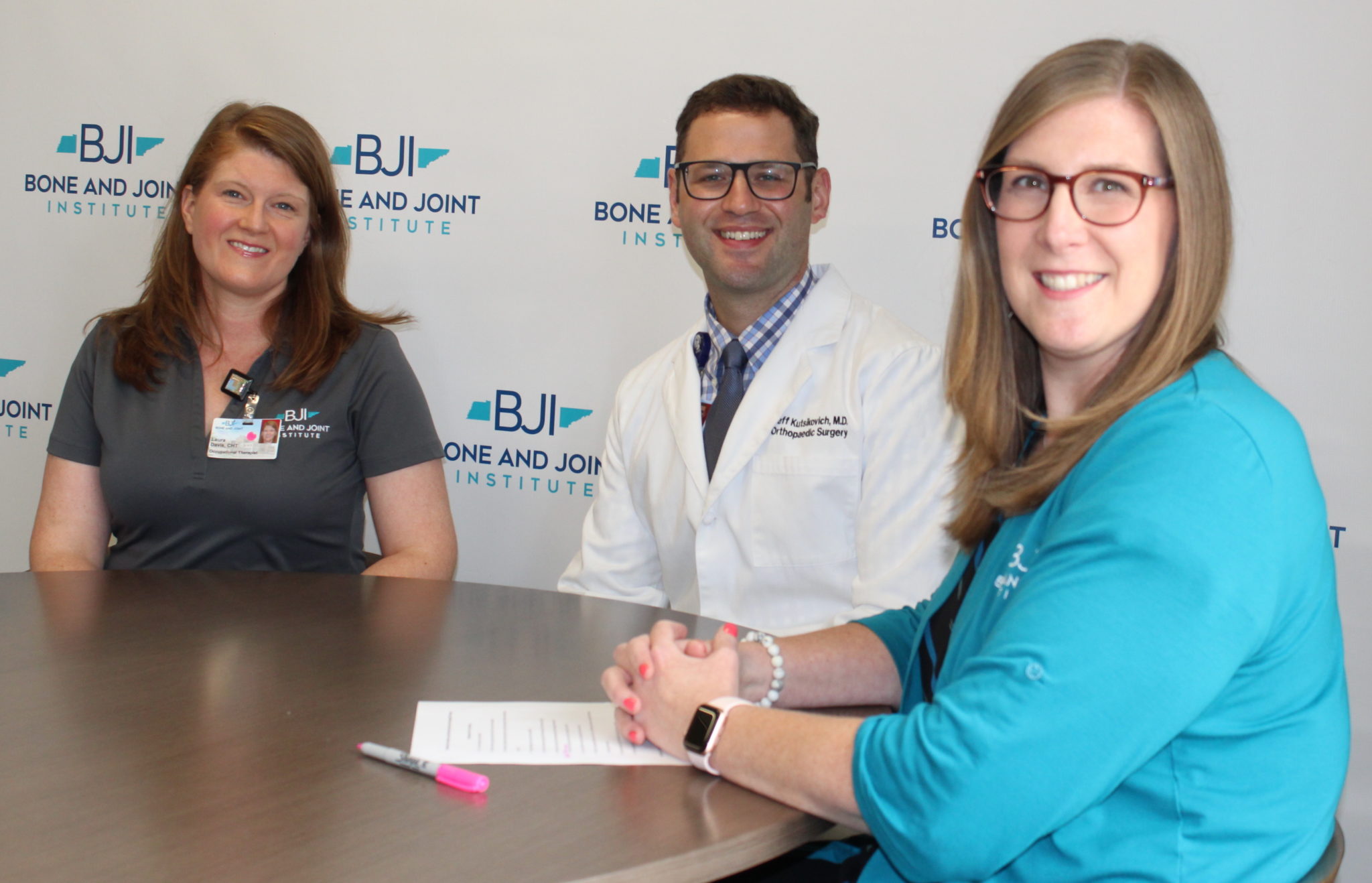Call Us: 615-791-2630

With the weather nice and the days longer, more folks are out, about and active. We decided to sit down with Jeffrey Kutsikovich, M.D., and Laura Davis, OTR/L, CHT, to talk about how to avoid upper extremity injuries and how to cope with them should they occur.
The upper extremity consists of the shoulder, elbow, wrist and hand, and these types of injuries are increasingly common, including fractures, tears and joint dislocations. Dr. Kutsikovich and Laura discussed how to prevent injuries while staying active, technologies used during surgery, and how the Bone and Joint Institute’s physicians and occupational therapy specialists work together to help patients reach their goals.
How can I prevent repetitive stress injuries, especially now that the weather is getting warmer and we can go outside?
Kutsikovich: Use your body as a guide. If something is uncomfortable when you’re doing an activity, it’s not necessarily a great idea to continue. Periods of rest between activities and listening to your body can also help you to not overdo it.
Davis: If you’re out canoeing all day on the river and you start to feel tired, that’s a good time to take a break before you pick it back up. I think ultimately engaging in long-term flexibility and strengthening programs is helpful as well.
What about when you do have to operate? Do you have examples of technology that you use?
Kutsikovich: There have been a lot of advances in our techniques, implants and certainly our post-op protocols, which is where Laura comes in. One of the examples that is relatively new with implants is internal braces. This has been in the media because Drew Brees, quarterback for the New Orleans Saints, actually had that this past year. He tore a ligament in the thumb on his throwing hand, and he had this internal brace device that was used to repair the ligament and provide support immediately, which is why he was able to return to play so quickly.
We’ve used that device for a couple of years now, and it has been very successful. That kind of implant technology allows us to progress patients faster, and it allows them to get back to their activity or their sport quicker. At the same time, it allows us to avoid some other things we used to do.
For example, if we were repairing that same ligament, we used to use pins through the joint to hold it in place because our old technology didn’t support force as well. We were always worried about the ligament repair failing. With the new technology, we don’t have to worry about that as much. We can get patients moving faster; we can get them into therapy several days after surgery, and they can start moving even quicker. One thing Laura specializes in is making customized, molded splints and braces. Being able to have strong implants means we can do less immobilization.
How does occupational therapy help speed recovery?
Davis: Contrary to popular belief, we do not find people jobs as occupational therapists. When you come in to Bone and Joint Institute for occupational therapy, we are focusing on your upper-extremity injuries. That includes anything from the shoulder to the hand. We have extra training in that area, and two of us are certified hand therapists. We have taken an extra board exam to specialize in the treatment of upper extremity injuries.
From post-operative day one, we’re focusing on getting you back to your ultimate goal. We use purposeful and meaningful activities to do that. Whether that’s getting back to being able to change a diaper or you need to be out playing golf, or whatever it is you need to do, we are focused on getting you back to that goal.
We use a lot of that in our treatment as well. We specialize in orthotic fabrication and management, and sometimes that includes just protecting a surgery. Or, sometimes that includes orthotic fabrication for just getting a joint moving, so we use a lot of that in our practice, and we get to be a little creative as well.
How do occupational therapists and surgeons work together at the Bone and Joint Institute?
Kutsikovich: I can’t imagine practicing without Laura and her team in rehabilitation services. So much of what hand and upper extremity surgery involves is after the surgery. You can have a great surgery, and you can have a hardworking patient; but without the appropriate therapy afterward, you won’t have a good result.
Having a close relationship with your therapist is of the utmost importance. Particularly being right down the hall and so close to each other is valuable. If there is any type of problem, I am right there to talk with Laura and the occupational therapy team, and frequently they will come to my office, or I will go back to therapy if I have anything to share.
What makes BJIT special?
Kutsikovich: We are definitely team-oriented, and we recognize that not everyone can be good at everything. When there is a problem outside of my area of expertise, I know I can go down the hall and ask for my partner’s help.
Davis: Ultimately, we have the patient’s #1 goal in mind, and we’re working together along the way to help the patient achieve that goal.
